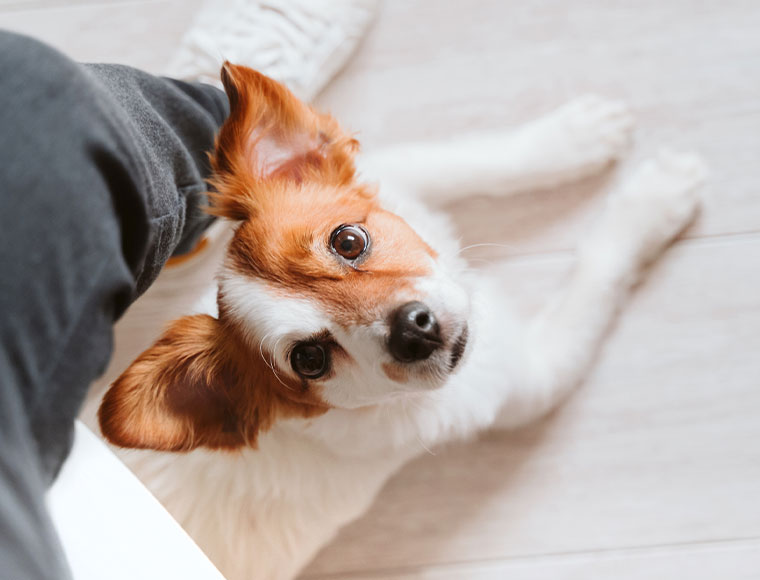Having an office dog is one thing, but having everyone bring a dog to the office is quite another.
So the question is, how do we take dogs of different energies and mix them together in a way that lets them feel comfortable and relaxed in an office setting? The short answer is practice. Teaching a dog how to be in the office is the same as teaching our dogs how to be at home, around our family, around friends and so on.
Understanding the energy of the dogs is important. Friendships are created through compatible energies. That’s how dogs embrace one another. It’s like a recipe: All the ingredients play off of one another to make the end result taste good.
Ideally, adaptable, well-socialized, chill dogs are the best to bring to the office. By this I mean dogs that have the ability to settle down, which is a question of being rather than doing. If your dog is nervous, has to follow you around, marks inside, guards you (or food or toys), barks obsessively, is fearful of new people, moves forward toward people who back up or has a bite history, the office might be an overwhelming place for him or her.
While behavior modifications may be helpful before bringing a dog to the office, it’s important to first check yourself. If you — yes, you — feel nervous or unsure about bringing your dog into the office, give some thought to where that is coming from. It’s all about energy, so dig deep and ask yourself, am I bringing my dog into the office for me? Will my dog actually find it enjoyable?
Finally, once you’re ready to blend dogs and create lasting friendships in the office, plan ahead. Schedule a walk with your co-workers and their dogs. Meeting up prior to going to the office is an important ritual for our dogs and ourselves. It moves energy, creating a flow so you’re not putting pressure on your dogs face-to-face. It will also give you a good idea of which dogs have energy that’s compatible, so on the day you introduce your dogs to the office, you can match the equation. Think of it this way: First you exercise the body (taking a walk), then you work the mind (mixing in the office). If you can, take your dog on a really good hike or walk mixed with exploring and smelling around, maybe running and walking again, ending calmly. It would be nice to do this at the office with your co-workers 45 minutes to an hour before work starts as well.
At home, practice asking your dog to settle so that he can do it in an environment he doesn’t know. On a nonwork day, go on your morning walk to fulfill your dog’s body, then come back inside to your home office area and invite your dog to his bed. Ideally, having your dog just hang out on a bed or a clearly defined space will show him what you want.
Practice having one of your family members walk in as your distraction, as if he or she is your “co-worker.” Walk around your home office, having a leash on your dog to show him where you would like him to be if he gets up. Kindly guide him back to where you would like him and, if he is relaxed, reward him with a small treat, letting him smell it and then eat it, right in the position he’s in. Try verbal feedback too, such as a low level “thank you” or “good” or “yes.” Dogs learn by association, so always reward a calm state of mind. You’ll know you achieve this when your dog’s breathing is slower and his or her face, eyes and tail are all relaxed. Practicing this mock office setting will get you ready for the office and will help build your confidence for interactions that may come up.
In our next issue, we’ll talk about how to take on the first day of work together. For more, contact Cristina at Trail Dog Inc., 914-755-1153.




